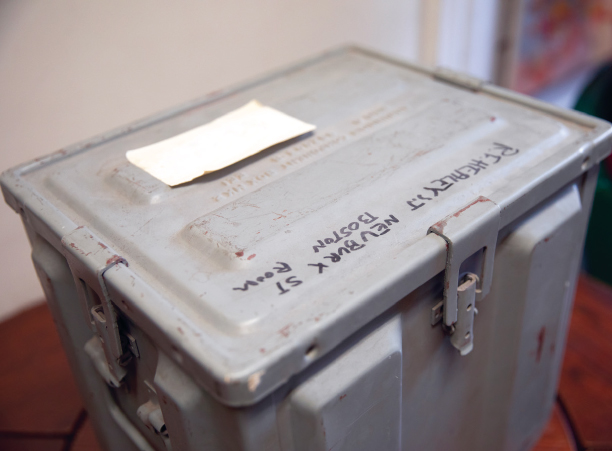
It's nearly impossible to imagine Mount St. James without the iconic spires of Fenwick and O'Kane halls, but that's exactly what a 1955 master plan predicted — and argued was inevitable.
A Dec. 15, 1955, story published in The Crusader outlines the campus' future via a master plan devised by architect Cornelius W. Buckley '29 and presented to the public by Rev. William A. Donaghy, S.J., the College's 27th president (1954- 1960).
"It is necessary," Fr. Donaghy said, "to have a specific plan for all future building if the campus is to have any proportion." The article stated the "dream campus" would "be cruciform with the main axis along Linden Lane to the chapel, and the minor axis from Kimball Hall to Dinand Library." With nothing beyond Dinand, save for the already 8-year-old Field House, this proposal would have eliminated today's upper campus, which has been home to the majority of new construction for past decades.
Under the eye-catching statement "O'Kane Will Tumble," the article explained why the College's most famous buildings would not see much of the 21st century. "These buildings contain no steel, and as Fr. Donaghy put it, 'we have to face the reality that they won't stand forever,'" wrote author Bill Kennedy '58. "We do expect them to last for another fifty or sixty years, however." The plan called for Fenwick and O'Kane to be replaced by two residence halls and an administration building (numbers 9, 10 and 11).
The article noted a student union was "the most pressing need." "The natural location for the structure would be the area between Kimball Hall and Fitton Field," Fr. Donaghy said. It would include "a gymnasium, student recreation facilities and probably either a swimming pool or a skating rink." Also slated to be built near the proposed student union — a new field house. The plan called for the Field House to be replaced by an "intramural The Plan for a Holy Cross Without Fenwick and O'Kane I gym" in the same footprint.
However, despite a student union being viewed as a priority, that didn't mean it would be built first due to "the increasing need for science facilities." According to the article, "a new science building is proposed, modeled after the Biology Building (editor's note: You know the "Biology Building" as O'Neil Hall; it was renamed in 1959). A new science building would be located between Biology (O'Neil) and the Field House. Both the science building and the student union are planned for the near future."
The "student union" arrived 12 years later in the form of Hogan Campus Center, notably on the opposite end of campus from the plan and beyond the proposed map. The "science building" would be realized in 1959 as Haberlin Hall, named after Monsignor Richard J. Haberlin, class of 1906, former vicar-general of the Archdiocese of Boston and president of the College's then General Alumni Association at the time of his death. Swords Hall would follow in 1985 and Smith Laboratories in 2009, with the entire Integrated Science Complex opening in 2010.
The article noted: "The new campus is a long-range project. Although work may begin within a few years, Fr. Donaghy noted that all of the proposed buildings will not be completed 'in my lifetime and perhaps not in yours.'"
For a further description of Fr. Donaghy's building plans and more history behind them, see Pages 323-324 in "Thy Honored Name: A History of the College of the Holy Cross (1843-1994)" by Rev. Anthony J. Kuzniewski, S.J.
Written by Melissa Shaw for the Winter 2019 issue of Holy Cross Magazine.
About Holy Cross Magazine
Holy Cross Magazine (HCM) is the quarterly alumni publication of the College of the Holy Cross. The award-winning publication is mailed to alumni and friends of the College and includes intriguing profiles, make-you-think features, alumni news, exclusive photos and more. Visit magazine.holycross.edu/about to contact HCM, submit alumni class notes, milestones, or letters to the editor.
A Holy Cross Without Fenwick and O'Kane?
A long-forgotten 1955 master plan for the College predicted that a campus without the iconic buildings was inevitable
Read Time
3 Minutes

